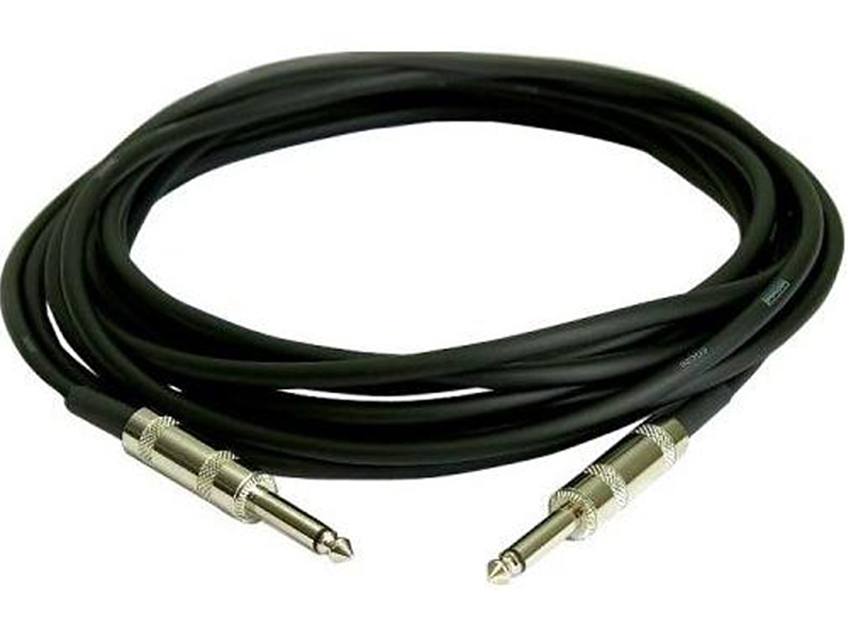
You've invested thousands on super big-time guitars and amps. So why, then, are you killing your fat tone all because of some cheesy, piece of crap guitar cable that should only be used for tying up old newspapers? If you're tangled up and blue about picking (and caring for) the right guitar cable, here are some handy-dandy tips to straighten you out.
Get Shorty
It's not the size that matters. For eons we've been told this, and guess what? There's truth to this bit of wisdom, only it's in reverse. Twenty-foot guitar cables are great if you want to storm into the crowd, but you'll have to sacrifice some tone for the price of rock glory. It's just common sense: the longer a distance your signal has to travel, the weaker it's going to get. The best bet is to stick to a length that's somewhere in the middle, twelve feet, say. (That's the distance of two tall dudes laying end-to-end between you and your amplifier. And why would you really need any more than two tall dudes?)
Metal Rocks
Electronics 101: metal conducts electricity, plastic doesn't. So look for metal head shells surrounding the plugs. These cables are a little more expensive than ones that use injected molding around their plugs, but they sound way better. A/B a couple one day and you'll notice the difference. Also, look for two or four-conductor cables, as opposed to single conductors. If the packaging doesn't tell you what you're buying, ask a salesperson.
Come Clean
Think about it: You wipe off your strings because they get full of grime and grease. What, you think the plugs on your cables don't get gunk on them? You don't even have to be messy per se for plugs to build up thin layers of varnish - the very thing that will eventually reduce the flow of electrons back and forth. Fixing this problem is easy: A few times a year, grab a soft, clean, lint-free cloth and wipe off your plugs. Better yet, use a little contact cleaner like DeoxIT or 801B. That'll do the trick.
Go With The Flow
Ever wonder why some high-audio cables have little arrows printed on them that point which way the cord should be plugged in? That's because an audio interconnect requires the signal to be able to pass at the same strength in both the positive negative direction. Modifying this balance causes impedance mismatches - and seriously bonks your awesome tone.
Because most guitar cable manufacturers don't pay any attention to this matter, you're on your own. But don't panic, this is another easy one to figure out. All you have to do is plug your guitar in one way, then try it the other way. A/B your tone - chances are you'll find a difference if you listen carefully - and voila! problem solved. Oh, but only try this with a cable of conservative length; that fifty foot monster is going to sound like dirt no matter what.
Want all the hottest music and gear news, reviews, deals, features and more, direct to your inbox? Sign up here.
Joe is a freelance journalist who has, over the past few decades, interviewed hundreds of guitarists for Guitar World, Guitar Player, MusicRadar and Classic Rock. He is also a former editor of Guitar World, contributing writer for Guitar Aficionado and VP of A&R for Island Records. He’s an enthusiastic guitarist, but he’s nowhere near the likes of the people he interviews. Surprisingly, his skills are more suited to the drums. If you need a drummer for your Beatles tribute band, look him up.
